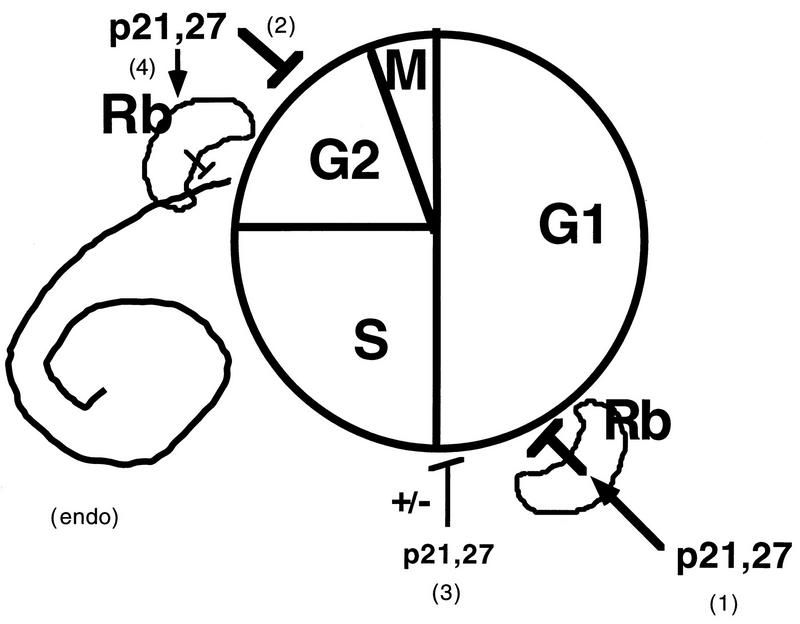FIG. 8.
Model of the cell cycle effects of p21 (and p27). Based on differences between pRb-positive and pRb-negative cells, it appears that the presence of a functional Rb pathway is necessary for maximal G1 arrest (pathway 1). G1 arrest in the absence of a functional pRb pathway is inefficient (pathway 3). A second target of p21 action, present in all cell types but more apparent in pRb-negative cells, exists at the G2/M transition (pathway 2). Finally, p21, which probably contributes to preventing inappropriate DNA replication in G2-arrested cells in the presence of a functional pRb pathway (pathway 4), can actually lead to endoreduplication in pRb-negative cells (endo). The cell cycle distributions in our Rb+ and Rb− cells suggest that the Rb-dependent G1/S arrest (pathway 1) is the most sensitive to p21 and is triggered first, followed by the G2/M arrest (pathway 2) and possibly last by an Rb-independent G1/S arrest (pathway 3). Cycling cells will accumulate predominantly in the first of the arrests that comes into effect.

